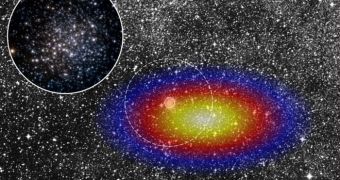As telescopes become increasingly advanced, astronomers are beginning to discover weird structures at the core of our galaxy, which indicate a rough past for the Milky Way. Recently, a team of experts studied the Terzan 5 globular cluster, gaining new knowledge of how the galaxy formed.
Astrophysicists refer to many of the globular star clusters at the core of the Milky Way as stellar fossils. These formations are incredibly old, packing together millions of stars between themselves. They are also thought to have formed outside the galaxy.
Terzan 5 is no exception, with its massive star count and high density. Measurements indicate that as many as 10,000 stellar objects are crammed together within the volume of a cubic light-year.
The data also indicate that the formation developed somewhere else, maybe in a different galaxy that collided with the Milky Way at one point in time. Previous studies have demonstrated conclusively that a galaxy as large as our own couldn't have grown without cannibalizing other space structures.
Interestingly, the fossilized star clusters only hang out in the central bulge of the Milky Way, in close proximity to the supermassive black hole powering up our galaxy. Even hidden behind massive dust and gas clouds, astronomers can still spot them using advanced telescopes.
By examining the history and evolution of these globular clusters, scientists can piece together the history of our own galaxy, determining the time when it collided with surrounding dwarf galaxies. The data can then be extrapolated further, to other galaxies.
In the end, investigators hope to understand the process of galaxy formation in more intimate detail. At this point, there are still many mysteries that require solutions when it comes to figuring out how massive spiral and elliptical galaxies form.
According to the data collected via the European Southern Observatory's (ESO) Very Large Telescope (VLT), it would appear that Terzan 5 itself was a dwarf galaxy at one point, featuring a much larger mass and more stars than it does today.
Over billions of years, it evolved by its own rules until it collided with the Milky Way. At this point, it lies in the inner core of our galaxies, some 20,000 light-years away from Earth. It contains many millisecond pulsars, and features the most tightly-packed stars in the galaxy, Daily Galaxy reports.

 14 DAY TRIAL //
14 DAY TRIAL //